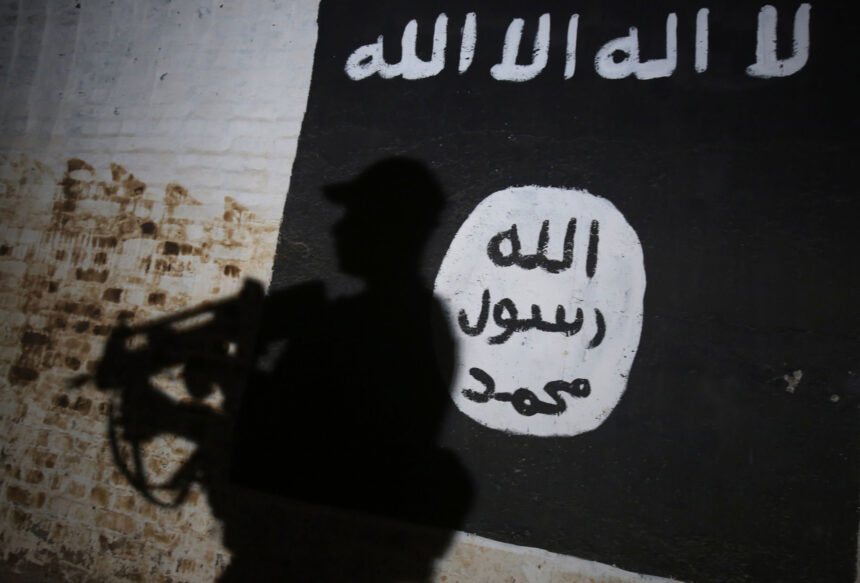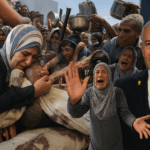Summary by Geopolist | Istanbul Center for Geopolitics:
The article examines the effectiveness and implications of various narratives and debates surrounding Islam and terrorism following the Hamas attacks on October 7. It explores how these attacks have influenced discussions on terrorism and the portrayal of Islam in global discourse.
Key Points:
- Context of the Hamas Attacks: The article starts by providing context on the October 7 attacks by Hamas, which resulted in significant casualties and heightened tensions. These attacks have sparked renewed debates about the nature of terrorism and its connections to religious ideologies.
- Impact on Public Discourse: The attacks have intensified discussions about Islam and terrorism. The article argues that such discussions often oversimplify complex issues and contribute to harmful stereotypes about Islam. It highlights how extremist acts by groups like Hamas are sometimes generalized to portray the entire religion in a negative light.
- Effectiveness of Current Narratives: The article critiques the effectiveness of current narratives in addressing the root causes of terrorism. It suggests that focusing excessively on religious aspects can overshadow other factors, such as political, social, and economic grievances, that contribute to extremism. The piece argues for a more nuanced understanding of terrorism that goes beyond religious explanations.
- Media and Political Responses: The article discusses how media and political responses to the attacks can shape public perceptions of Islam and terrorism. It highlights concerns about sensationalist reporting and political rhetoric that may exacerbate existing biases and hinder constructive dialogue.
- Religious Extremism vs. Broader Contexts: A significant portion of the article is dedicated to differentiating between religious extremism and broader political and social contexts. It emphasizes that while extremist groups may use religious rhetoric, their actions are often driven by a combination of factors, including regional conflicts and political grievances.
- Implications for Policy and Security: The article also touches on the implications of these debates for policy and security. It argues that a narrow focus on religious motivations can lead to ineffective counterterrorism strategies and policies that fail to address the underlying issues fueling extremism.
- Calls for Reformed Approaches: The piece concludes by calling for reformed approaches to discussing and addressing terrorism. It advocates for policies that consider the multifaceted nature of terrorism and promote understanding and cooperation among different communities.
Conclusion: The article emphasizes the need for a more comprehensive and nuanced approach to discussing terrorism and Islam. It argues that current narratives often fall short in addressing the complexities of extremism and calls for strategies that encompass a broader range of factors beyond religious motivations.
Read more below.
Perspective: Debating Islam and Terrorism After the October 7 Hamas Attacks: How Effective Is It?
In recent decades, the intersection of Islam and terrorism has become a major topic of debate and concern. The rise of Salafi-Jihadist groups, which use religious ideologies to justify violence, has further complicated this issue. Significant terrorist attacks since the early 2000s—such as the September 11 attacks in 2001, the Madrid bombings in 2004, the London bombings in 2005, the Mumbai attacks in 2008, and the Paris attacks in 2015—have intensified this association. The Hamas terror attacks on Israel on 7 October 2023, and the subsequent overreaction by the Israeli government, including the killing of Hamas leader Ismail Haniyeh, have worsened the situation. While the perception of Islam in relation to terrorism harms Muslim communities, it often leads to unfair accusations that Islam supports terrorism. The October 7 attacks have deepened the divide and created challenges for counterterrorism efforts, allowing jihadist groups to exploit the current climate, attract more radicalized recruits, and gain strength.
Islam is not a religion represented by today’s violent jihadist groups, corrupt political Islamist parties, or repressive regimes that misuse so-called Islamic laws, as seen in Afghanistan. Like other religions, Islam opposes terrorist violence. However, political conditions since the 1980s have linked Islam with terrorism, leading to widespread negative perceptions. Recent debates on the effectiveness of discussing Islam in the context of terrorism, particularly following the Hamas October 7 terror attacks, raise questions about how appropriate and effective this strategy is. This essay examines the fundamental factors behind the frequent association of Islam with terrorism and offers recommendations for addressing this issue. Detailed research is recommended to explore this issue within the context of specific countries and regions.
David Rapoport’s framework of the four waves of terrorism categorizes the evolution of terrorism into distinct periods, each lasting approximately forty years. The first wave, anarchist terrorism, occurred between 1880 and 1920 and was characterized by acts committed by anarchists. This was followed by the second wave of anti-colonial terrorism from 1920 to 1960, where local groups opposed colonial powers. The third wave, known as new left terrorism, emerged from 1960 to 1980 and involved left-wing and revolutionary groups influenced by Maoist and Marxist ideologies targeting American interests. The fourth wave, which began in 1980, was identified as religious terrorism and was expected to persist for another forty years.
Despite white supremacist groups exploiting Christianity and Aum Shinrikyo exploiting the tenets from Buddhism and Hinduism in the 1980s and 1990s, Islamist groups have become the predominant force in the fourth wave of terrorism. The 1979 Iranian Revolution led to the export of terrorism by the new Iranian regime, while the Soviet invasion of Afghanistan resulted in the creation of fighters who later joined al-Qaeda. These events are considered key factors in the rise of religious terrorism. The September 11 attacks brought global attention to Islamist terror groups, followed by the rise of al-Qaeda in Iraq (AQI) and its transformation into today’s Islamic State in Iraq and Syria (ISIS). The Arab Spring in the early 2010s further destabilized the Middle East and North Africa (MENA) region, as the removal of long-standing dictators created power vacuums that were filled by local jihadist groups. These groups competed to align themselves with ISIS or a-Qaeda in countries such as Egypt, Yemen, Libya, and Syria.
Rapoport’s fourth wave of terrorism was expected to end around 2020, after a 40-year period, but it has not yet concluded. Evidence suggests that jihadist groups will remain a significant threat in the coming decades. For instance, according to the Global Terrorism and Trends Analysis Center (GTTAC) Records of Incidents Database (GRID), jihadist groups were responsible for 57.9 percent of terrorist attacks in 2021 and 52.1 percent in 2022—over 4,000 incidents—and accounted for more than 90 percent of terrorist-related fatalities in both years. Among the top ten terrorist organizations with the highest casualties are both ISIS and al-Qaeda affiliates. These include ISIS-K in Afghanistan, the Islamic State in West Africa Province (ISWAP) in Nigeria, the Islamic State in the Greater Sahara (ISGS) in the Sahel region, the Islamic State in the Democratic Republic of Congo (ISIS-DRC), and the Islamic State in Mozambique (ISIS-M). Al-Qaeda affiliates include Jama’at al-Nusra wal Muslimin (JNIM) in the Sahel, al-Shabaab in Somalia, Hay’at Tahrir al-Sham (HTS) and Ahrar al-Sham in Syria, al-Qaeda in the Arabian Peninsula (AQAP) in Yemen, and Tehrik-e-Taliban Pakistan (TTP).
Today, religious terror groups in Islamic countries carefully choose their targets and act strategically rather than randomly. For instance, they use names with Islamic connotations, such as “Islamic State,” “Jihad,” “Ansar,” and “Mohammad.” Research by the author on these groups’ names shows that they often adopt Islamic terminology and reference the Qur’an. They distort Islamic teachings to justify their actions, including twisting verses to support violence. Additionally, these groups have altered the meaning of “jihad,” which originally referred to a “struggle” or “effort” to lead a virtuous Islamic life. Now, the term “jihadist” is commonly used to describe terrorists who commit brutal acts, such as beheadings and burning people alive.
Several factors shape the current perception of Islam in relation to terrorism. One key factor is the long-standing political and economic issues in Islamic countries. After the collapse of the Ottoman Empire in the early 20th century, the Muslim world lost its global influence, leading to two main consequences. First, the fall of the caliphate left a power vacuum that jihadist groups and corrupt political Islamist leaders have attempted to fill. Second, this loss of influence led to the rise of authoritarian regimes across the MENA region, which often discriminated against various groups and pursued their own interests. For example, the Muslim Brotherhood in Egypt faced severe repression from the ruling governments. The continued oppression of certain groups left them with few options for peaceful resolution, leading some to resort to violent resistance. This cycle of violence was worsened by long-standing authoritarian rule that benefited only the elites. Efforts in Tunisia to break this cycle led to similar movements across the Arab world. Known as the Arab Spring, these uprisings were initially viewed as opportunities for democratic change. However, many ousted leaders were replaced by new authoritarian rulers who continued the old regime’s practices.
Ongoing repression by rulers in the Islamic world has created a legacy of exploiting terrorism. Recognizing the power of using terrorism as a label after the September 11 attacks, these regimes began designating opposition groups as terrorists. Today, opposition groups in these countries are often labeled as terrorist organizations. For example, the Egyptian government has designated the Muslim Brotherhood and its millions of followers as terrorists, similar to how the Turkish government has labeled followers of the Gulen movement as terrorists. Despite these designations, GRID records show only a few dozen terrorist incidents in both countries per year.
Another important issue in the Islamic world is how to interpret Islamic rules in today’s context. Terrorist groups distort verses from the Qur’an by using only selected parts to support their agendas. For example, verses about war are misinterpreted to justify beheadings, and verses addressing non-believers are twisted to justify attacks on Westerners. These verses should be understood in their proper context. For instance, the Qur’an’s references to non-believers are about those who aim to harm Muslims. Given the current educational challenges in the Islamic world, terrorist groups can easily sway people by exploiting these misinterpretations.
The contextual gaps in the Islamic world are filled by a violent version of Salafism. Businesspeople from the Gulf States establish mosques and religious schools to spread this form of Salafism across many Islamic countries. For example, they have opened mosques in countries such as Bangladesh, Pakistan, Indonesia, the Philippines, Kosovo, Albania, and various African nations. They continue to fund religious schools in Afghanistan and Western Pakistan. These schools and mosques produce more radicals and promote a literal interpretation of the Qur’an. Today’s Afghanistan exemplifies strict interpretations of Islam, where the regime’s repression of women and human rights violations are justified by so-called Islamic rhetoric. This contributes to negative images and perceptions of Islam in the Western world.
Authoritarian governments in the Islamic world seek to extend their influence beyond their borders and use terrorism as a tool. Iran is listed as one of the four countries on the U.S. government’s list of state sponsors of terrorism. Iran is indeed involved in proxy wars and sponsors militia groups in Syria, Yemen, and Iraq that target American interests. However, Iran is not the only country in the Islamic world that sponsors and enables terrorism. Many countries in the Gulf and MENA regions use terrorist tactics to suppress opposition and sponsor violent groups for their own gain, providing funding and procuring arms and explosives. This only worsens the situation and damages Islam’s reputation, as these groups commit atrocities under Islamic names. Addressing the issue effectively requires cutting off the financial resources and arms procurement for these terror groups, which means holding the supporting states accountable. The Western world must address these states equally, regardless of arms sales and economic interests in the MENA region. Otherwise, current counterterrorism strategies are likely to fail. Military operations may offer temporary relief but will not provide a lasting solution.
The struggle between Saudi Arabia and Iran for regional dominance in the Middle East has further associated Islam with terrorism. Iran positions itself as the leader of Shias, while Saudi Arabia aims to lead the Sunni world. Historically, Shias and Sunnis coexisted relatively peacefully, and their conflicts were less severe compared to those between Catholics and Protestants. However, the Shah’s revolution in Iran and Saudi Arabia’s ambition for regional dominance led to proxy wars. Both countries began supporting and sponsoring violent groups, regardless of whether these groups engaged in terrorism. For instance, Iran sponsored and funded militia groups to support the Assad government in Syria, while Saudi Arabia, along with Turkey and Qatar, backed rebel groups attempting to overthrow Bashar al-Assad. Similarly, Iran supported the Houthis and sought to establish a government under their control in Yemen, while Saudi Arabia opposed them. This reckless support by both states in these proxy wars has led to the creation of terror groups, whose actions are often framed within the context of Islam.
Generalizations and discrimination against Muslim communities in Europe have fueled xenophobia and Islamophobia. Younger generations are particularly at risk of radicalization by extremist groups on social media. These individuals, known as home-grown extremists, have been involved in various attacks in Western countries. Al-Qaeda has exploited this by encouraging sympathizers to carry out attacks in their own countries, recognizing that achieving victory against well-equipped Western militaries is challenging. Today, home-grown extremists are viewed as a significant threat, along with right-wing extremists, due to their difficulty in being tracked and prevented.
Some media in both the Islamic world and Western countries play a crucial role in shaping perceptions of Muslim communities, often in ways that can be damaging. In the Islamic world, media reporting can sometimes be manipulated to fit particular narratives. For example, following Hamas October 7 attacks, media coverage often includes anti-American and anti-Semitic sentiments. The perceived silence of Western countries regarding the Israeli government’s actions—such as the killing of thousands of civilians, including women and children—are used by some Islamic media to foster hatred towards the West. Additionally, bans on hijabs in some Western countries are frequently reported as evidence of Western hostility towards Islam. Conversely, some Western media often shows bias against Muslim communities. For instance, there is a tendency to label Muslim individuals as terrorists almost immediately after an attack, even when the facts are not yet clear. This quick labeling occurs regardless of whether the attacker has links to a terrorist group or is motivated by personal grievances or mental health issues. Such rapid and sweeping generalizations contribute to negative stereotypes about Muslims.
In many MENA countries, followers of moderate Islam face repression from ruling parties unless they offer their absolute support. These rulers suppress any factions they perceive as threats. For example, political Islamist parties often seek the unconditional support of all Islamic groups, expecting these groups to endorse their corrupt practices and human rights violations. Groups that refuse to support these governments’ wrongdoing face repression. The political pressure from these parties has shaped a new perception of Islam, which appears to condone the actions of these regimes. As a result, younger generations living under such regimes are increasingly exposed to a distorted view of Islam, as represented by corrupt political Islamist parties.
The world has yet to see a successful model of a country that combines democracy with Islam. Issues of exploitation and repression in the Islamic world are often wrongly attributed to Islam’s supposed opposition to democracy. In reality, these problems are rooted in historical, political, and cultural factors, not in the religion itself. For example, Western efforts to promote democracy in Iraq and Afghanistan have failed despite spending billions of dollars. The persistent problems of corruption and ethnic conflict are not due to Islam but are historical and cultural issues. In Afghanistan, for instance, the Taliban’s Pashtun-led government is not recognized as legitimate by other ethnic groups such as the Uzbeks, Tajiks, and Hazaras. Additionally, much of the financial aid provided by the US for development was misused by Afghan government officials.
It should be noted that endemic corruption in Islamic countries has significantly impacted counterterrorism strategies. Countries with large Muslim populations, such as Syria, Pakistan, Nigeria, Mali, Somalia, Burkina Faso, and Afghanistan, often rank high in both terrorist incidents and corruption. This widespread corruption undermines efforts to effectively combat terrorism. Additionally, political Islamist parties exploit religion by using distorted interpretations of the Qur’an to justify their actions. They normalize and legitimize their corrupt practices through these twisted interpretations. Leaders who have embezzled millions from their countries misuse Islamic principles to manipulate followers and hide their misconduct.
The Western world spends billions of dollars to counter jihadist terrorist organizations. Since the September 11 attacks in 2001, the relatively low number of major terrorist incidents in Western countries has been taken as evidence of successful counterterrorism efforts. This has led to the belief that jihadist groups are largely confined to the regions where they have been active. However, according to the GRID, over 20,000 people still die each year in more than 7,000 terrorist attacks, many of which are carried out by jihadist groups.
Discussing terrorism in the context of religion is not a productive strategy. Long-standing economic and political issues in Islamic countries are often intertwined with religion by political parties that misuse Islam to cover their wrongdoings and by terror groups that use it to justify their brutal attacks. The causes of jihadist terrorism are rooted in several factors: the ongoing cold war between Iran and Saudi Arabia, both of which support various rebel and militia groups regardless of whether they are classified as terrorist organizations; the spread of a strict version of Salafism through mosques and religious schools in many developing countries in the Islamic world; the sense of discrimination felt by people under authoritarian rulers in African and Middle Eastern countries; and persistent educational and economic issues.
It is unfortunate that the conflict between Palestinians and Israelis has been framed in a religious context, extending beyond the region. Debates linking Islam to terrorism only serve the interests of terrorist groups. These groups use such discussions to portray the Western world as biased against Islam, which helps them radicalize and recruit more followers. To counter terrorism effectively, strategies should address the underlying causes of terrorism within specific regions and prevent terrorist groups from using Islam to justify their actions.
By: Mahmut Cengiz
Source: Small Wars Journal







